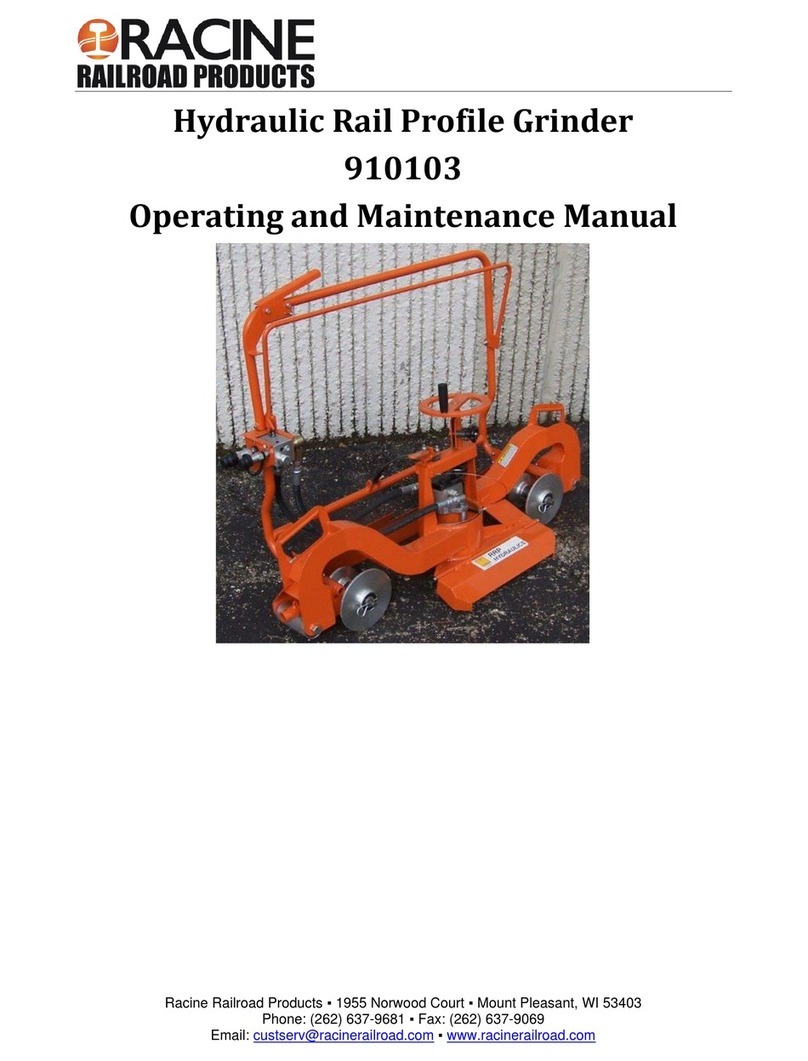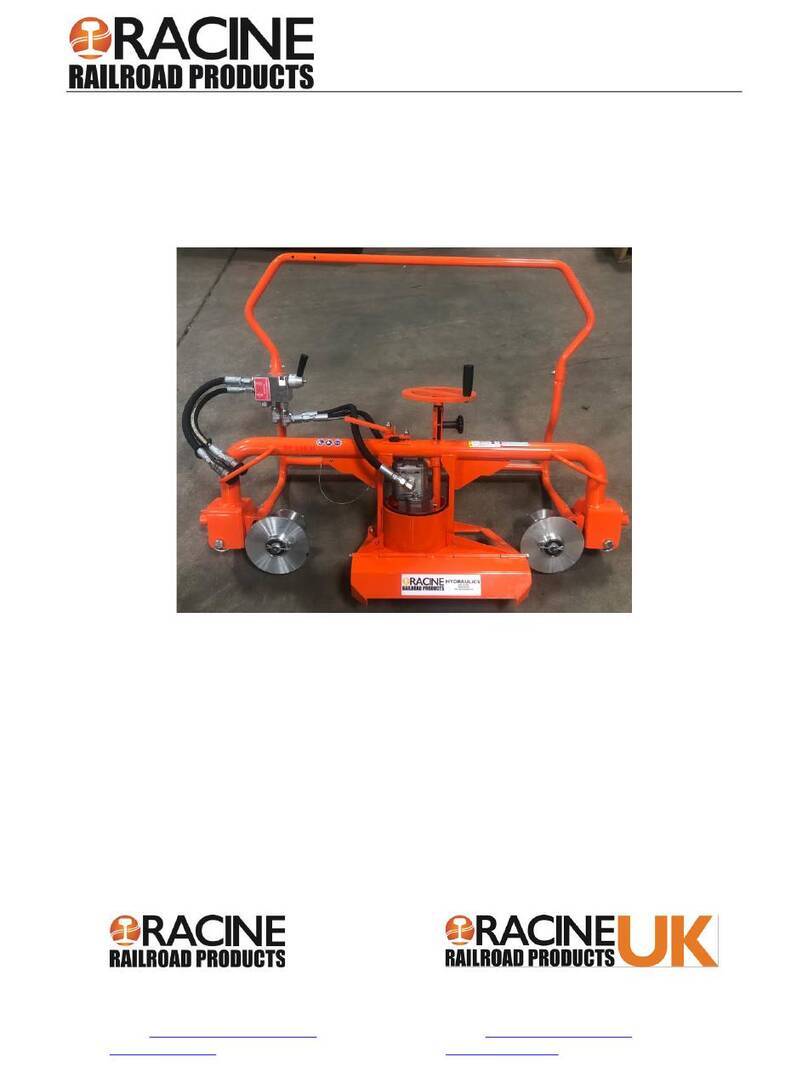
Email: custserv@racinerailroad.com
Safety Information
For safe installation and operation of this equipment, carefully read and understand the contents of this
manual. Improper operation, handling, or maintenance can result in equipment damage and personal
injury.
Only trained and authorized personnel should be allowed to operate this machine. In addition, all
personnel at the worksite (gang) should be aware of the safety concerns and their individual
responsibilities prior to working this machine.
Please read and comply with all the safety precautions in this manual before operating this machine.
Your safety is at risk.
Safety Terms
DANGER indicates a hazardous operating procedure, practice, or
condition. If the hazardous situation is not avoided death or
serious injury will occur.
WARNING indicates a hazardous operating procedure, practice, or
condition. If the hazardous situation is not avoided death or
serious injury could occur.
CAUTION indicates a potentially hazardous operating procedure,
practice, or condition. If the hazardous situation is not moderate or
minor injury could occur.
Note: Indicates an essential operating procedure, practice, or condition.
No personal injury is possible.
Machine Use and Safety Precautions
Failure to follow safety precautions when operating this equipment can
result in serious injury or death to the operator or other persons in the
area.
Observe the following precautions whenever you are operating, working
on or near this equipment.
Do not use this machine for other than its intended purpose.
Do not make any modifications without authorization or written approval from Racine Railroad Products.
Replace all Racine Railroad Products and OEM parts with genuine Racine Railroad Products and OEM
parts. Using non-OEM parts may compromise the safety of the machine.
Do not wear loose clothing, jewelry, radio belts, etc., when operating, working on or near this equipment.
They can be caught in moving parts and may result in severe injury.
Do not allow others to be near the tool when starting it or while operating. Keep bystanders and animals
out of the work area.
Do not overreach. Maintain proper footing and balance at all times.
Never operate the tool when you are tired, angry, emotionally disturbed, or under the influence of alcohol,
drugs, medications, or anything that could affect your vision, alertness, coordination or judgement.





























